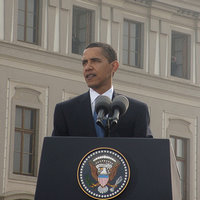With the Nuclear Nonproliferation Treaty Review Conference around the corner, President Barack Obama is in dire need of a credible arms control and disarmament achievement worthy of the lofty agenda he articulated almost a year ago in Prague. Although Obama's higher-profile disarmament goals remain out of reach for now, he could still arrive at the upcoming New York meeting with just such an achievement in hand: ridding Europe of U.S. nuclear weapons. But to do so, he will have to reject flawed and outdated arguments that stand in the way.
Support for removing the 150 to 200 tactical nuclear weapons still deployed in Belgium, Germany, Italy, the Netherlands, and Turkey is currently gathering momentum. These bombs are remnants of the thousands-strong arsenal established during the Cold War as a deterrent to the Soviet Union, an objective that has long since outlived its purpose. Today, these weapons represent a dangerous anachronism, and are more likely to be stolen and used by terrorist organizations than they are to stand as effective deterrents against 21st century security threats.
On Feb. 26, the governments of Belgium, Germany, Luxembourg, the Netherlands and Norway penned a letter to NATO Secretary-General Anders Fogh Rasmussen, urging him to address NATO's nuclear policy -- including discussions of tactical nuclear weapons -- during the alliance's heads of state summit in April. Ultimately, any changes to NATO's nuclear-sharing agreement would first require revisions to NATO's Strategic Concept. That document is currently being redrafted, with the new version due at the end of the year. But there has reportedly been back-channel coordination on this issue with the Obama administration, which is also expected to leave the door open to such revisions in the much anticipated, albeit delayed, Nuclear Posture Review.

